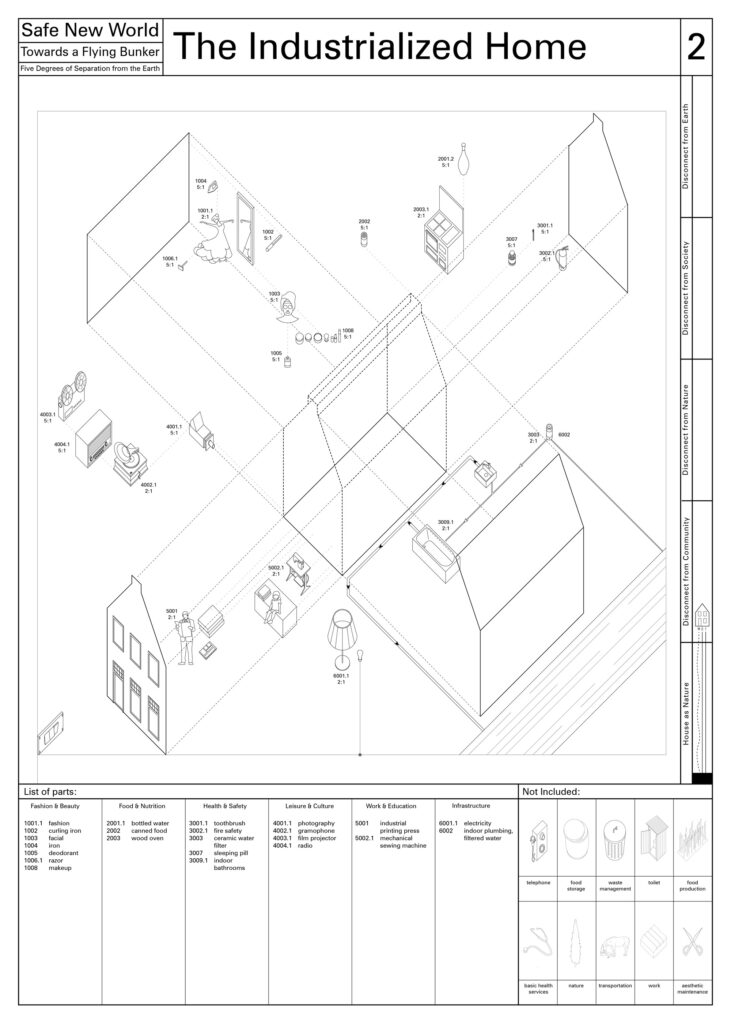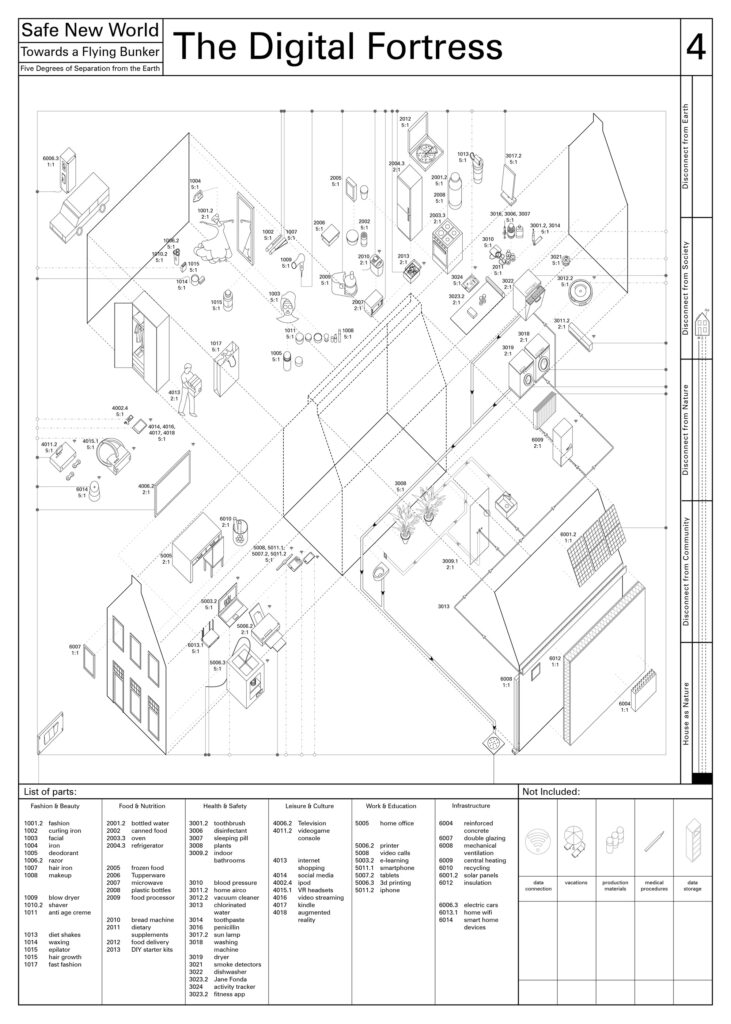Towards A Flying Bunker
Coauthor: Nishi Shah
In our safe new world, we can fulfil most of our needs without ever leaving the house. We work from home, we connect digitally with our friends, coworkers, distant family members. We order food online. We buy and return new clothing and furniture without ever stepping inside a store. We exercise and learn from our home, gaining knowledge and skills from people we will never meet. We gather our power and water without connecting to an infrastructural grid. There are but a few activities for which we still need to cross from inside our doorstep to the outer world. We are safe and fulfilled within our own four walls.
Our house is a machine for living. From the toothbrush to smart home devices, this scenario investigates the development of household objects and infrastructures and the functions they carry into our home. But instead of focusing only on what we gain, we also acknowledge what is lost. Through five degrees of separation from the Earth, the project visualizes the accumulation of objects and functions through six categories: health and safety, fashion and beauty, food and nutrition, culture and leisure, work and education, and infrastructure and networks. lt depicts the growing domestic possibilities and the disconnects they engender, leading to the break from Earth itself.

The Primitive Hut serves as a benchmark-the house is just a shelter-it is nature itself. lt identifies archetypal domestic functions, placing the basic needs for sustaining human lifesun, fire, crops, river-outside of the house itself.

The lndustrialized Home represents the first disconnect-that from our community. lnventions such as the telephone, the radio and the industrial printing press allowed us to receive information and communicate with others from our home, making it unnecessary to meet so aften in person. The increase in health and hygiene awareness, however, still grounded us through dependence on various infrastructural networks.

The Analogue House disconnects us from nature. Through the invention of various household appliances, mechanica! ventilation, air, water and sewage filters, we are no more dependent on natural cycles and direct availability of resources. Information arrives to our homes not only through sound but also through image, allowing us to virtually see the outside in real time.

In the Digital Fortress, different machines and gadgets follow us and track our moves, routines, and preferences, turning everything into (ab)useable data that arranges our daily life. Video calls, live streams, VPN connections, and massive online multiplayer games move all aspects of our lives into the digital realm, leaving very few functions in the physical one. Connecting us with virtually everything, it disconnects us from society itself.

Traveling even further into the future, we arrive to the Flying Bunker. All functions are now available from the safety of our home. We can perform our own medical procedures, produce our own food, clothing and objects, we experience new things through a fully immersive virtual experience. We carry our own data, produce our own energy, recycle our own waste. Disconnecting from all physical networks, the Flying Bunker lifts away from Earth itself.
This project was created within the framework of The Berlage Design Master Class (2020) led by Theo Deutinger titled “Living in Safe Mode: A Quest for the Essential”
